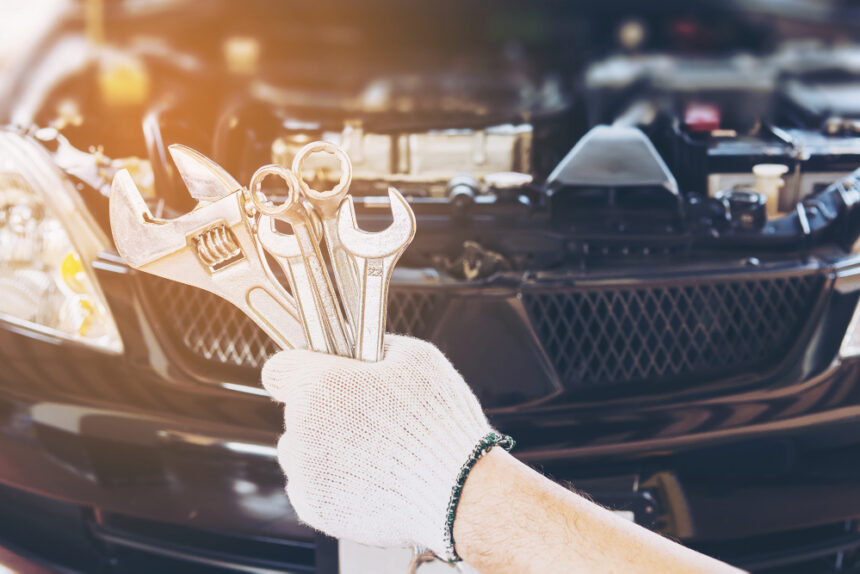Owning a car comes with a sense of freedom and convenience. Whether you’re commuting to work, running errands, or heading out on a weekend getaway, your vehicle plays a critical role in your daily life. But just like your body needs regular checkups, your car also needs consistent care to remain in optimal condition. Car maintenance isn’t just about oil changes and tire rotations—it’s a comprehensive approach to keeping your vehicle safe, efficient, and reliable for the long haul.
In this complete guide, we’ll walk you through the essential aspects of car maintenance, helping you extend your vehicle’s lifespan, save money on repairs, and improve safety. Whether you’re a seasoned car owner or a first-time buyer, understanding the basics and the best practices of car maintenance will serve you well on and off the road.
Why Car Maintenance Matters More Than You Think
Many car owners don’t prioritize vehicle maintenance until something goes wrong. However, being proactive can prevent costly repairs and dangerous breakdowns. Here are a few compelling reasons why regular car maintenance should be at the top of your to-do list:
- Enhances Safety: A well-maintained car is less likely to experience failures that could lead to accidents. Brakes, tires, and lights are particularly crucial for safety.
- Boosts Performance: Maintenance improves fuel efficiency, engine power, and driving smoothness.
- Extends Vehicle Lifespan: A properly maintained car can easily last 200,000 miles or more.
- Preserves Resale Value: If you plan to sell your car in the future, a documented maintenance history will raise its value.
- Saves Money: Preventative care is far less expensive than major repairs caused by neglect.
Understanding Your Vehicle’s Maintenance Schedule
Every vehicle comes with a recommended maintenance schedule outlined in the owner’s manual. This schedule is designed by the manufacturer and tailored to the car’s specific make and model. Typical service intervals are based on time (every six months) or mileage (every 5,000–10,000 miles). Following this schedule ensures you’re not missing critical checkups.
The schedule includes:
- Oil and filter changes
- Tire rotations and alignments
- Fluid checks (coolant, brake, transmission, power steering)
- Brake inspections
- Air filter replacement
- Timing belt replacement
Failing to adhere to your maintenance schedule can void your warranty and increase wear and tear on your vehicle.
Oil Changes: The Lifeline of Your Engine
Changing your car’s oil is one of the most fundamental car maintenance tasks. Engine oil lubricates moving parts, reduces friction, prevents overheating, and traps dirt and debris. Over time, oil degrades and becomes less effective.
How often should you change the oil? It depends on the vehicle and type of oil. Conventional oil needs to be changed every 3,000 to 5,000 miles, while synthetic oil can last 7,500 to 10,000 miles.
Signs it’s time for an oil change:
- Engine noise
- Oil warning light on the dashboard
- Dirty or dark oil
- Exhaust smoke
- Decreased fuel efficiency
Always replace the oil filter when changing the oil to prevent old contaminants from circulating through the engine.
Tires: Your Car’s Only Contact with the Road
Tire maintenance is essential not just for performance, but also for safety. Tires with insufficient tread or improper inflation can lead to poor handling, blowouts, and accidents.
Tire care includes:
- Regular inspections: Look for uneven wear, punctures, and cracks.
- Tread depth checks: Use the penny test—insert a penny into the tread with Lincoln’s head down. If you can see the top of his head, it’s time to replace the tire.
- Tire rotations: Rotate tires every 6,000 to 8,000 miles to ensure even wear.
- Balancing and alignment: Poor alignment can cause steering issues and uneven tire wear.
Also, don’t forget to check your spare tire periodically and keep it properly inflated in case of emergencies.
Brakes: Don’t Take Them for Granted
Your brakes are perhaps the most critical safety component of your car. Worn or failing brakes can significantly increase stopping distance and put your life in danger.
Common signs of brake issues include:
- Squealing or grinding noises
- A soft or spongy brake pedal
- Vehicle pulling to one side when braking
- Vibrations when applying the brakes
- Brake warning light illuminated
Brake pads typically need replacing every 30,000 to 70,000 miles depending on driving habits and conditions. Neglecting them can damage rotors, leading to costly repairs.
Battery Health: Stay Charged and Ready
Your car battery provides the necessary electrical power to start the engine and operate electronics like lights, radio, and navigation. While modern batteries are quite reliable, they do wear out.
Maintenance tips:
- Inspect terminals: Check for corrosion and clean with a wire brush.
- Test regularly: Have the battery load-tested annually, especially before winter.
- Replace every 3–5 years: Batteries degrade over time and may fail suddenly.
Signs of a weak battery include slow engine cranking, dim lights, and frequent jump-starts.
Coolant and Radiator: Preventing Overheating

Your vehicle’s cooling system keeps the engine from overheating by circulating coolant. Without proper maintenance, the system can fail, leading to overheating and severe engine damage.
Coolant system maintenance:
- Check coolant levels monthly.
- Flush the radiator and replace the coolant every 2–5 years depending on vehicle requirements.
- Inspect hoses for leaks or cracks.
- Ensure the radiator cap is secure and undamaged.
Also, never open a hot radiator cap—it can cause serious burns from pressurized steam.
Transmission: Smooth Shifting Ahead
The transmission transfers power from the engine to the wheels. It can be automatic or manual and requires routine care to stay in good working order.
Signs of transmission issues:
- Slipping gears
- Delayed response when shifting
- Unusual noises like whining or clunking
- Fluid leaks (reddish or dark brown color)
For automatic transmissions, replace fluid every 30,000 to 60,000 miles. Manual transmissions may require less frequent fluid changes.
Air Filters: Clean Air Means Better Performance
There are two main air filters in your car: the engine air filter and the cabin air filter. Both play crucial roles in performance and comfort.
- Engine air filter: Prevents dirt and debris from entering the engine. Replace every 15,000 to 30,000 miles.
- Cabin air filter: Cleans air entering the car’s interior. Replace every 12,000 to 15,000 miles.
A clogged engine filter reduces acceleration and fuel economy, while a dirty cabin filter can affect air quality and HVAC efficiency.
Lights, Wipers, and Windshields: Visibility is Vital
Being able to see and be seen is critical to safe driving, especially at night or in bad weather.
Essential maintenance:
- Inspect all exterior lights (headlights, brake lights, indicators) monthly.
- Replace burnt-out bulbs promptly.
- Clean lenses regularly to remove grime and fogging.
- Replace windshield wiper blades every 6–12 months.
- Keep windshield washer fluid full.
A cracked or chipped windshield should also be repaired or replaced to avoid visibility issues and potential structural problems.
Fluid Checks: The Lifeblood of Your Vehicle
Your car relies on several fluids to operate efficiently. Besides engine oil and coolant, make sure to check:
- Brake fluid: Low levels can cause brake failure.
- Power steering fluid: Needed for smooth, responsive steering.
- Transmission fluid: Crucial for gear function and cooling.
- Windshield washer fluid: Essential for clear vision during rain or dirt buildup.
- Differential fluid: Important in vehicles with all-wheel or four-wheel drive.
Check levels monthly and top up as needed, using the correct type of fluid specified by your manufacturer.
Seasonal Car Maintenance Tips
Changing seasons bring unique challenges for vehicle maintenance. Here’s what to consider during different times of the year:
Winter:
- Switch to winter tires for better grip.
- Keep the gas tank half full to prevent fuel line freeze.
- Check battery health.
- Use winter-grade windshield washer fluid.
Summer:
- Inspect the AC system.
- Watch for coolant leaks.
- Keep tires properly inflated as heat can increase pressure.
- Park in the shade to protect the interior.
Spring/Fall:
- Perform tire rotations and brake checks.
- Change air filters.
- Inspect suspension and steering components.
- Wash and wax to remove winter road salt or pollen build-up.
DIY vs. Professional Maintenance: What Should You Handle Yourself?
While many car maintenance tasks can be performed at home, some are better left to professionals.
DIY-friendly:
- Checking fluids and tire pressure
- Replacing wiper blades and air filters
- Changing engine oil (if you have the tools and space)
- Cleaning the battery terminals
Professional-only:
- Brake system repairs
- Transmission service
- Engine diagnostics
- Suspension and alignment adjustments
- Timing belt replacement
Even if you enjoy working on your car, always consult the manual and don’t hesitate to hire a mechanic for complex issues.
Car Maintenance Myths You Should Stop Believing
There are plenty of misconceptions when it comes to car care. Let’s bust a few myths:
- “You must change oil every 3,000 miles.”
Not true for most modern cars with synthetic oil. - “Premium gas improves performance in all cars.”
Only use premium if your car specifically requires it. - “Warming up the car in winter takes 15 minutes.”
Modern engines only need 30 seconds to warm up before driving. - “Tires should be replaced only when flat.”
Tires should be replaced based on tread wear and age. - “Brake pads last forever.”
They wear down and should be checked regularly.
Creating a Maintenance Log for Your Car
Maintaining a written or digital maintenance log can be incredibly beneficial. Track dates, mileage, services performed, and receipts. This helps you:
- Stay on schedule
- Track recurring issues
- Provide proof of care for resale or warranty
There are several apps that can make tracking easy, such as CarFax Car Care, Drivvo, or Simply Auto.
Make Car Maintenance a Habit, Not a Hassle
Car maintenance may seem like a chore, but it’s an investment in your vehicle’s longevity and your own safety. With consistent care, your car can deliver reliable performance for years to come, all while saving you money in the long run.
Taking the time to understand your car’s needs and staying on top of routine maintenance tasks will help you avoid unpleasant surprises down the road. Whether you choose to do it yourself or rely on trusted professionals, the key is consistency. Keep your ride running longer, safer, and more efficiently—because a well-maintained car is a happy car.

